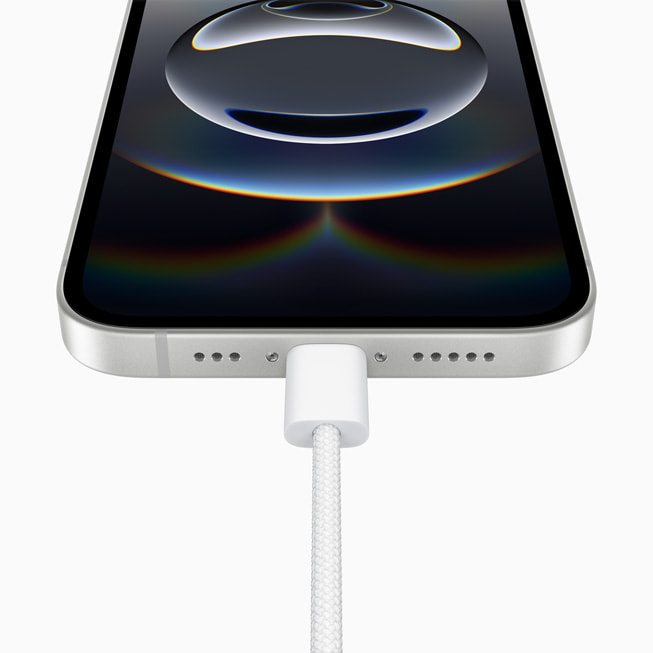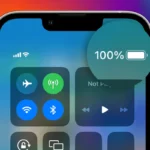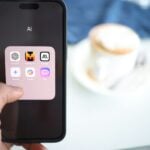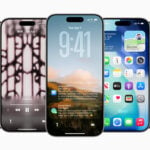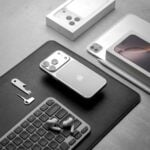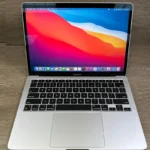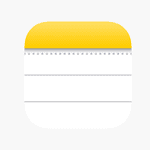Finding your iPhone won’t charge can be frustrating, especially when you need your phone most. You might plug it in and see nothing happen – no charging icon, no response at all. The most common causes for an iPhone not charging are damaged cables, dirty charging ports, software glitches, or issues with the power source. These problems can usually be fixed with simple steps at home.
Before panicking about a broken phone, try some basic fixes. Check your charging cable for damage like fraying or bent connectors. Look at your iPhone’s charging port for lint or debris that might block the connection. Sometimes the simplest solution works – just restart your iPhone to resolve software issues that prevent charging.
If basic fixes don’t work, you might need to try different charging cables or adapters. Test charging from a wall outlet instead of a computer. When all else fails, your iPhone might need professional help from Apple Support.
If your iPhone isn’t charging when plugged in, don’t worry—this is a common issue and often easy to fix. Here’s a step-by-step guide to help you figure out what’s wrong and get your phone charging again.
1. Check the Basics First
- Make sure you’re using the right charger and cable. Use an Apple-certified Lightning cable and power adapter. Third-party accessories can sometimes cause problems.
- Try a different outlet. Plug into another wall socket or try a different power source like a computer USB port or a power bank.
2. Inspect Your Charging Cable and Adapter
- Look for visible damage. Frayed wires, bent connectors, or scorch marks can prevent charging.
- Test with another cable/adapter. If you have a spare, try swapping them out to see if the problem is the charger, not the iPhone.
3. Examine the Charging Port
- Check for debris or lint. Pocket lint and dust can block the connection. Shine a flashlight into the port.
- Clean it gently. Use a wooden or plastic toothpick, or a small brush (like a clean toothbrush) to clear out debris. Be careful not to damage the contacts inside.
4. Force Restart Your iPhone
Sometimes a software glitch can stop charging. Try force restarting:
- iPhone 8 and later: Press and quickly release the Volume Up button, press and quickly release the Volume Down button, then press and hold the Side button until you see the Apple logo.
- iPhone 7/7 Plus: Press and hold both the Volume Down button and the Side button until the Apple logo appears.
- iPhone 6s and earlier: Press and hold both the Home button and the Top (or Side) button until you see the Apple logo.
5. Let Your iPhone Cool Down or Warm Up
If your iPhone gets too hot or too cold, it may stop charging to protect itself. Let it return to normal temperature before charging again.
6. Check for Software Updates
- Go to Settings > General > Software Update.
- Install any available updates. Apple sometimes fixes charging bugs in newer software versions.
7. Try Wireless Charging (If Supported)
If you have an iPhone 8 or later, try placing it on a wireless charger. If it charges wirelessly but not with a cable, the issue may be with the Lightning port.
8. Check for Liquid Damage
If your phone has been exposed to moisture, it may temporarily disable charging. If you see the “Liquid Detected in Lightning Connector” warning:
- Unplug the cable.
- Let your phone dry out for several hours before trying again.
9. Reset All Settings
As a last resort (before contacting Apple), you can try resetting settings:
- Go to Settings > General > Transfer or Reset iPhone > Reset > Reset All Settings.
- This resets system settings without deleting your data.
10. Contact Apple Support
If none of the above works, it may be a hardware problem:
- Battery issues
- Defective charging port
- Logic board damage
You can make a Genius Bar appointment at an Apple Store or contact Apple Support for repair options.
Pro Tip: If your iPhone is still under warranty or covered by AppleCare+, you might be eligible for a free repair or replacement.
Key Takeaways
- Check your charging cable, adapter, and port for damage or debris that blocks connections.
- Restart your iPhone to fix software glitches that might prevent normal charging.
- Try different power sources, cables, or take your device to Apple Support for persistent issues.
Understanding iPhone Charging Components
When your iPhone won’t charge, the problem usually stems from one of several key components in the charging system. A proper diagnosis requires checking each part of the charging setup to find what’s causing the issue.
Charging Port Inspection
The charging port is often the culprit behind charging problems. Over time, dust or debris can block the charging port, preventing proper connection. To inspect the port:
- Turn off your iPhone before inspection
- Use a flashlight to look inside the port
- Check for lint, dust, or debris buildup
Cleaning the port requires gentle tools. Avoid metal objects that might damage the contacts. A wooden toothpick or soft brush works well. Carefully scrape out any visible debris.
Physical damage can also affect charging. Loose connections in the port may cause intermittent charging issues. If the port wobbles or feels loose, this indicates hardware damage that may require professional repair.
Charging Cable and Power Adapter Check
Faulty cables and adapters are common causes of charging problems. Look for these issues:
- Frayed or kinked cables
- Bent or damaged connectors
- Discoloration at connection points
- Exposed wires
Test multiple cables if possible. Sometimes trying different chargers can quickly reveal if the cable is the problem. The charging indicator should appear when connected to a working cable.
Power adapters can also fail. Check if the adapter:
- Gets warm during normal use (normal)
- Gets extremely hot (problematic)
- Makes unusual noises
- Has visible damage
Using non-certified chargers may cause compatibility issues. Apple-certified accessories with the “Made for iPhone” logo offer the best reliability.
Wireless Charging Considerations
Wireless charging provides an alternative when port charging fails. For effective wireless charging:
- Remove thick cases or metal accessories that block the signal
- Position your iPhone properly on the center of the charging pad
- Clean the back of your iPhone if dirty
Not all iPhones support wireless charging. Models from iPhone 8 and newer have this capability. Testing wireless charging can help determine if the charging port is the issue.
Wireless chargers have their own requirements. They need sufficient power (usually at least 5W). Some chargers include indicator lights that show when proper connection is established.
If your iPhone charges wirelessly but not through the cable, this confirms a port-related issue rather than a battery problem.
Common iPhone Charging Issues
When your iPhone won’t charge, it can be frustrating and disruptive. Several common problems can prevent proper charging, from dirt in the charging port to software glitches and even battery optimization features.
Physically Unable to Charge
One of the most common reasons an iPhone stops charging is a damaged charging cable or adapter. Check your cable for fraying or breaks and try a different one if available.
Dirt and debris in the charging port often block the connection. Dust and fiber particles can get compacted inside, preventing proper contact. Gently clean the port with a soft brush or compressed air.
Liquid damage presents another serious issue. If your iPhone has been exposed to water, it may refuse to charge as a safety measure. Look for signs of moisture in the charging port or the liquid contact indicator.
Heat can also affect charging. If your iPhone feels too hot, it might temporarily stop charging until it cools down. Remove any case and place the phone in a cooler location.
Software-Related Charging Problems
Software issues can make your iPhone appear not to charge even when physically connected. Try a simple restart by pressing and holding the power button. This often fixes minor glitches.
Updating your iOS can solve charging problems. Old software might have bugs affecting power management. Check Settings > General > Software Update to ensure you’re running the latest version.
Sometimes, a more thorough iOS system recovery might be needed. Programs like iTunes can restore your iPhone if software corruption is preventing charging.
Force restarting your iPhone (different button combinations depending on your model) can clear temporary software issues when regular restarts don’t work.
Optimized Battery Charging Features
Modern iPhones include battery optimization features that can sometimes create confusion about charging. A bug in iOS 17 appears related to Optimized Battery Charging, causing some iPhone 11 models to stop charging.
This feature learns your daily charging routine and reduces battery aging by limiting charging above 80% until you need the phone. If your iPhone seems stuck at 80%, this might be why.
To disable this feature, go to Settings > Battery > Battery Health > Optimized Battery Charging and turn it off. This should allow your iPhone to charge completely without pausing.
Battery health settings also show whether your battery needs replacement. If your battery health is below 80%, charging problems might occur even with proper connections and software.
Troubleshooting Steps for Charging Difficulties
When your iPhone won’t charge, several techniques can help resolve the issue. These range from simple restart procedures to more advanced system recovery options and settings adjustments.
Forcing a Restart to Resolve Charging Issues
If your iPhone is plugged in but not charging, try forcing a restart. This often fixes minor software glitches that prevent charging.
For iPhone 8 or newer models:
- Press and quickly release the volume up button
- Press and quickly release the volume down button
- Press and hold the side button until you see the Apple logo
For iPhone 7:
- Press and hold both the side and volume down buttons for 10 seconds
For older models:
- Press and hold the home and top buttons simultaneously until the Apple logo appears
Many charging problems disappear after this simple step. The restart clears the phone’s memory without erasing your data.
iOS System Recovery Tools
When basic fixes fail, iOS system recovery tools can repair deeper software issues affecting charging. Tenorshare ReiBoot stands out as a reliable third-party option.
These tools work by:
- Diagnosing iOS system problems that prevent charging
- Fixing the system without data loss
- Addressing stuck recovery mode issues
To use recovery mode manually:
- Connect your iPhone to a computer
- Force restart your device
- When the recovery screen appears, use iTunes or Finder to restore
Apple’s own solution involves using iTunes or Finder to update or restore your device. This approach may resolve persistent charging issues caused by corrupted system files.
Resetting iPhone Settings
Sometimes iPhone charging problems stem from incorrect settings. Resetting these can help without erasing your content.
- Go to Settings > General > Reset (or Transfer/Reset iPhone in newer iOS)
- Tap “Reset All Settings”
- Enter your passcode when prompted
- Confirm the reset
This action returns all settings to factory defaults while keeping your apps, photos, and other content intact. It resets network settings, keyboard preferences, privacy settings, and location preferences.
After the reset, your iPhone restarts. Check if charging works properly now. This method often resolves charging issues related to software conflicts or corrupted settings.
Connecting iPhone to Various Devices
When your iPhone won’t charge, connecting it to different devices can help identify if the problem is with your charger or your phone. Different connections offer various charging speeds and troubleshooting options.
Checking Compatibility with Mac
Macs provide reliable charging options for iPhones through their USB ports. The connection is usually seamless since both devices are made by Apple.
To check if your iPhone charges with a Mac:
- Use an Apple-certified USB cable to connect your iPhone directly to a Mac USB port
- Look for the charging icon to appear on your iPhone screen
- If nothing happens, try a different USB port on your Mac
Some newer Macs with USB-C ports may require an adapter to connect with older iPhone cables. If your iPhone doesn’t charge with your Mac but charges with other devices, the Mac’s USB port might have insufficient power output.
Try restarting your Mac if charging doesn’t begin right away. This can reset the USB ports and fix connection issues.
Charging iPhone via Laptop or PC
PCs and laptops can charge iPhones, though sometimes more slowly than wall chargers. Not all computer USB ports provide the same power output.
When using a PC or laptop to charge:
- Connect your iPhone using a good quality USB cable
- Use USB 3.0 ports (often colored blue) for faster charging
- Keep your computer turned on, as some sleep modes disable USB power
A common issue is that dirty charging ports on either device can prevent proper connection. Gently clean both ends with compressed air if charging fails.
If your iPhone shows it’s charging but the battery percentage doesn’t increase, the computer’s USB port may not provide enough power. Try using the USB ports on the back of desktop computers, as they often supply more power than front ports.
Alternatives When Traveling Without a Charger
Finding yourself without an iPhone charger while traveling doesn’t mean your device must die. Several creative alternatives exist.
Emergency charging options include:
- TV USB ports: Many hotel TVs have USB ports that can charge iPhones
- Power banks: Portable batteries work well for emergency charging
- Public charging stations: Available in airports, cafes, and libraries
If these options aren’t available, borrowing a compatible charger from someone else can work. Some Android chargers with USB-A to USB-C cables will charge newer iPhones.
When using unfamiliar charging sources, watch for overheating. If your iPhone gets hot, disconnect it immediately to prevent battery damage. Also, avoid using very cheap third-party chargers as they may damage your iPhone’s battery or charging port.
Future Proofing iPhone Charging
Keeping your iPhone charging setup ready for the future means adapting to new technologies and standards. Apple’s transition to USB-C represents a major shift in how iPhones will charge in the coming years.
Adapting to USB-C on iPhone 15
The iPhone 15 lineup marks a significant change with Apple’s switch from Lightning to USB-C ports. This new standard offers faster charging speeds and greater compatibility with other devices.
Users upgrading to an iPhone 15 will need to replace their old Lightning cables with USB-C cables. Fortunately, many accessories already use this connection type.
The good news is that USB-C is widely used across laptops, tablets, and Android phones. This means fewer different cables to carry when traveling.
When buying new charging cables for an iPhone 15, look for:
- MFi certification (Made for iPhone)
- Data transfer capabilities if needed
- Fast charging support
- Durability features like braided nylon
Many existing USB-C chargers work with iPhone 15, but for optimal charging speed, use a 20W or higher power adapter. The standard 5W adapters will charge much slower.
This change also means iPhone 15 owners can charge their phones using MacBook chargers or other USB-C power sources they already own.
Frequently Asked Questions
iPhone charging issues can be solved with simple troubleshooting steps in many cases. Here are answers to common questions about charging problems.
How can I clean my iPhone’s charging port?
Turn off your iPhone before cleaning the charging port. Use a small, soft brush or compressed air to gently remove lint and debris.
Avoid using metal objects like paperclips as they can damage the delicate pins inside. A wooden toothpick can be used very carefully to remove stubborn debris.
After cleaning, try charging again with a known working cable.
What should I do if my iPhone is not charging or turning on?
Try a hard reset by pressing and quickly releasing the volume up button, then volume down button, then holding the side button until the Apple logo appears.
Test different charging cables and power adapters. Sometimes the problem lies with the accessories rather than the phone itself.
If possible, try wireless charging to determine if the issue is with the charging port.
What could be the reason for my iPhone to not charge, despite indicating that it is charging?
A damaged charging cable or adapter often causes this issue. Try using different charging accessories to see if that resolves the problem.
Software bugs can sometimes cause charging indicators to display incorrectly. Restarting your iPhone may fix this.
In some cases, iPhones might show the charging symbol but have a damaged battery that cannot hold a charge, requiring professional service.
What steps should I take if my iPhone won’t charge after exposure to liquid?
First, immediately disconnect any cables and do not attempt to charge your iPhone until it’s completely dry. This usually takes at least 24 hours.
Gently tap the phone with the connector facing down to remove excess liquid. Never use heat sources like hair dryers to speed up drying.
After the waiting period, try charging with a working cable. If problems persist, visit an Apple Store as liquid damage may require professional repair.
What are the potential issues when an iPhone model, such as the iPhone 15, is not charging when connected to power?
Newer iPhones like the iPhone 15 use USB-C ports which may collect dust more easily than older Lightning ports. Regular cleaning helps prevent this issue.
Software compatibility problems can occur, especially after updates. Checking for and installing the latest iOS version might resolve charging problems.
Some third-party chargers don’t meet Apple’s power specifications. Using Apple-certified chargers or those with proper power delivery ratings is important.
How much does it typically cost to repair an iPhone charging port?
Independent repair shops typically charge between $50-$90 to replace an iPhone charging port, depending on the model and location.
Apple’s out-of-warranty service fee for charging port repairs ranges from $99 to $149 for most models. AppleCare+ coverage may reduce or eliminate this cost.
DIY repair kits cost $15-$30 online, but attempting repairs yourself risks further damage and voids any existing warranty.

